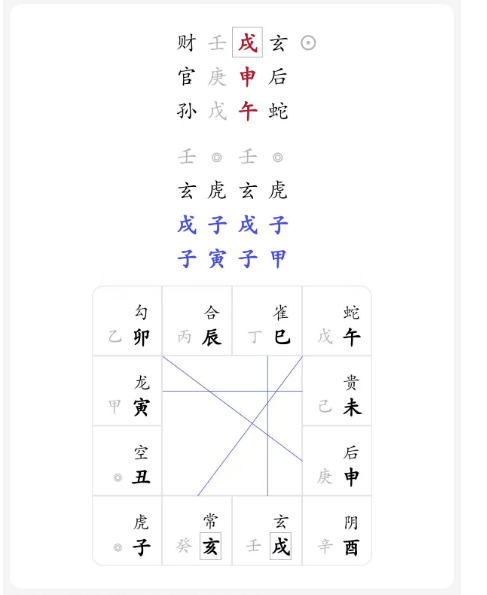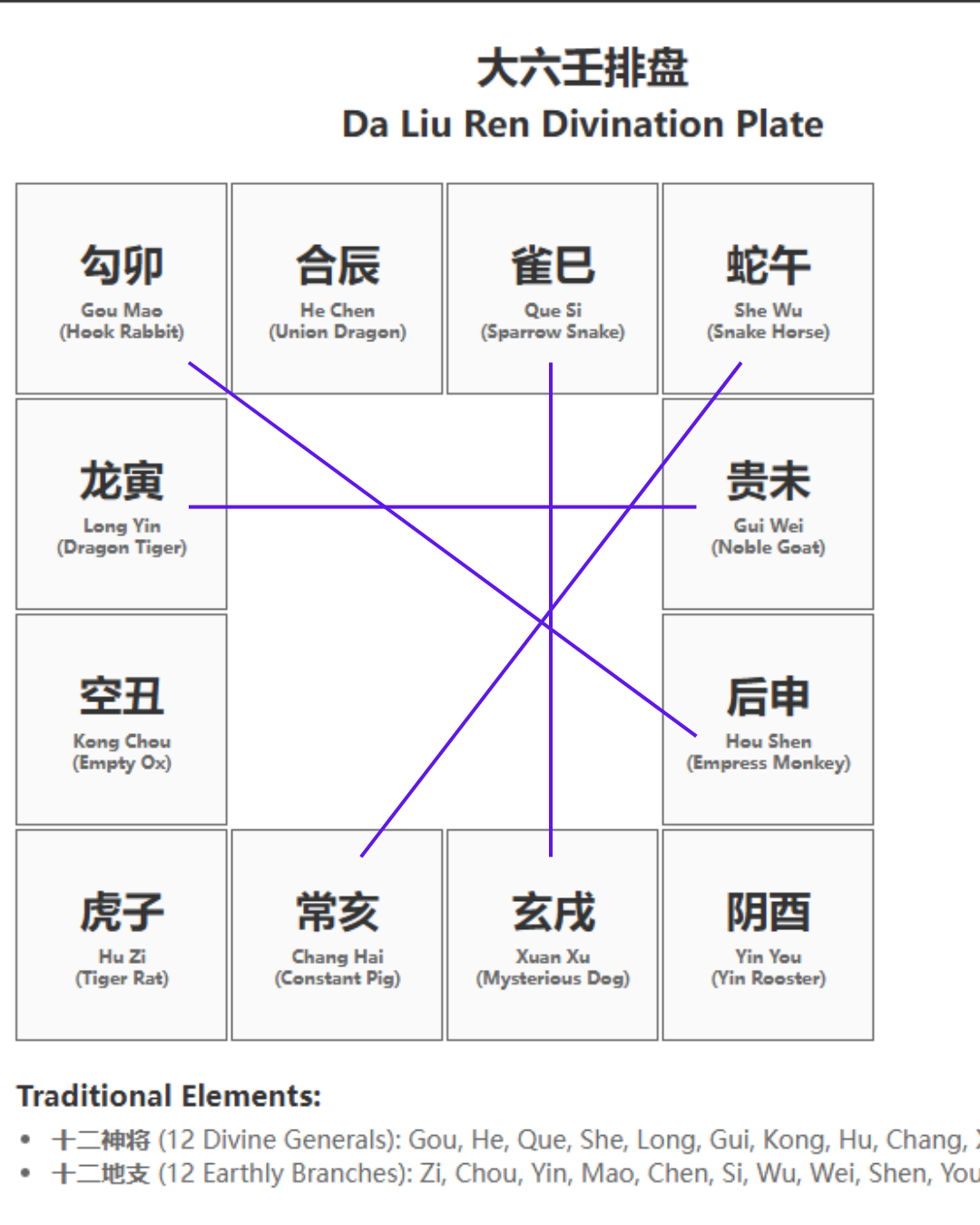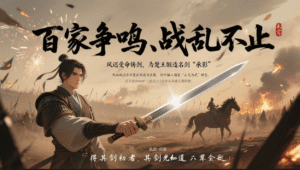Chinese Astrology Charts Complete Guide: Where Ancient Wisdom Illuminates Modern Psychology
Explore a cultural symbol system that carries 3,000 years of wisdom. Welcome to Chinese astrology charts and the Da Liu Ren traditional cultural system. These are not tools for telling the future. They are cultural mirrors that help with self-thinking and mind exploration.
This guide will show you three main things:
- How these old charts work as cultural tools for understanding yourself
- How to read and understand their symbol language
- Why people from different backgrounds find them interesting for reference
Learn more about the history of Chinese astrology and traditional Chinese calendar systems.
🎯 Ready to get started? We offer free Five Elements and Twelve Zodiac testing to help you quickly understand your elemental attributes and zodiac characteristics, preparing you for deeper study.
📚 What You'll Learn in This Guide

Part 1: Understanding the Architecture of Chinese Astrology Charts
Before we look at specific symbols, let's understand the cultural structure of Chinese astrology charts. These are not random mystical signs. They are organized systems that contain thousands of years of cultural wisdom about how people behave and think.
For deeper study insights, explore research on Chinese cultural views.
🏛️ The Four Pillars of Chinese Astrology Chart Systems
1. Temporal Mapping (Time Mapping)
Chinese astrology charts divide time into detailed cycles. Each cycle affects us differently:
- Year Pillar: Shows family patterns passed down through time
- Month Pillar: Reveals seasonal energies and medium-term patterns
- Day Pillar: Reflects what's happening right now
- Hour Pillar: Captures specific moments and timing
Learn more about Chinese calendar systems at the Met Museum.
The Core Components Explained
| Chart Part | Chinese Name | What It Does | Modern Meaning |
|---|---|---|---|
| Nine Palaces | Jiu Gong | Traditionally used to map different life areas | Different parts of life (cultural symbols) |
| Twelve Generals | Shi'er Jiang | In traditional views, represent energy types | Personality pattern reference (like Jung's ideas) |
| Heavenly Stems | Tian Gan | Culturally symbolize outside influences | Cultural metaphor for environment and situation |
| Earthly Branches | Di Zhi | Traditionally represent inner experiences | Cultural expression of feelings and habits |
| Spirit Deities | Shen Sha | Special energy markers in culture | Symbols of emotional and mental states |
Part 2: The Complete Symbol Dictionary - Your Master Decoding Manual
This section gives the most complete guide to Chinese astrology chart symbols available online. Each symbol has many meanings that change based on what's around it. It's like how the word "cool" can mean temperature or something good, depending on the sentence—this is the charm of cultural language.
Read more about Chinese zodiac meanings and traditional interpretations.
🐉 The Twelve Zodiac Animals in Chinese Astrology Charts
Element: Water
Time: 11pm-1am
Psychology: Flexibility, survival instinct
Element: Earth
Time: 1am-3am
Psychology: Persistence, grounding
Element: Wood
Time: 3am-5am
Psychology: Courage, impulse
Element: Wood
Time: 5am-7am
Psychology: Gentleness, intuition
🌟 The Four Celestial Guardians
Understanding the Guardians in Chinese Astrology Charts
| Guardian | Direction | Element | What It Means | When You See It |
|---|---|---|---|---|
| Azure Dragon | East | Wood | Growth, confidence, fresh starts | New chances, times of growth |
| White Tiger | West | Metal | Protection, fighting, limits | Problems, need to defend yourself |
| Vermillion Bird | South | Fire | Talking, passion, being seen | Social times, expressing yourself |
| Black Turtle | North | Water | Hidden things, secrets, safety | Unknown issues, deep feelings |
🔮 Advanced Symbol Combinations in Chinese Astrology Charts
How Symbols Interact: The Chemistry of Chinese Astrology Charts
Just as chemical elements combine to form compounds, symbols in Chinese astrology charts create meaning through their relationships:
Reading Reference: Emotional intensity (Water) fueling active action (Tiger) with defensive energy (White Tiger) = Someone feeling emotionally threatened and reacting with strong self-protection. This is a traditional cultural observation view.
Reading Reference: Passionate energy (Fire) grounded in reality (Dragon/Earth) with communication focus (Vermillion Bird) = Someone ready to eloquently express their ambitions. This combination is traditionally viewed as quite positive.

Part 3: Deep Case Study - How Qimen Dunjia Revealed Academic and Emotional Patterns
🔍 The Student Case: Understanding Emotional Turbulence Through Xuankong Nine Palaces
Background: In June 2024, parents consulted about their daughter's sudden mood swings and declining academic performance. The 14-year-old girl had become emotionally unstable and was struggling to concentrate on studies.
They decided to use Xuankong Nine Palaces · Qimen Dunjia traditional cultural method to understand the underlying patterns.
Learn about how traditional cultural practices complement modern therapy.
The Qimen Dunjia Chart Reading
Discovery 1: The Snake's Emotional Coiling
The "Snake" hidden spirit in Wu Palace traditionally indicates complex emotions and being trapped by inner feelings. The Snake belongs to Fire element, entering Wu Palace while hiding beneath Sun Door, from a cultural angle suggesting the girl's recent emotional ups and downs with inner worries circling repeatedly, difficult to release.
Discovery 2: Academic Pressure Pattern
The Official Star in Shen Palace traditionally represents rules, academics, and parental/teacher expectations. However, it was being suppressed by the Snake and Sun Door combination, creating an "emotional resistance to academic" situation—this is culturally observed as emotions blocking learning.
Discovery 3: The Void of Understanding
"Zi-Chou Void" in Zi Palace traditionally reveals emptiness and helplessness. According to cultural views, she felt that effort and reward were not equal, lacking achievement and security, further increasing rebellion and avoidance behaviors.
Discovery 4: Five Element Imbalance
The chart showed excessive Fire and Earth elements while Metal and Water were suppressed. Since Metal-Water traditionally represents learning and rational energy, their suppression caused fragmented thinking and difficulty focusing—this is a traditional cultural analysis view.
✅ The Qimen Dunjia Solution Strategy
1. Five Element Adjustment
Traditional Suggestion - Strengthen Metal-Water: Place metal decorations (copper bells, small wind chimes) and blue decorations in her room. Engage in water-related activities (swimming, listening to flowing water music) to support Metal-Water energy, which traditionally may calm emotions and improve focus.
2. Emotional Channel Clearing
Cultural "Release and Renew" Method: Arrange mood journaling, painting, and music therapy to help her release the "Snake's" emotional blockages instead of keeping them suppressed—this is modern application of traditional wisdom.
3. Reduce External Pressure
Soften Official Star Energy: Parents and teachers should moderately soften the "Official Star" atmosphere, using understanding and encouragement instead of high pressure to avoid triggering the suppressed Official Star in Shen Palace—this follows traditional harmony ideas.
4. Build Security
Fill Zi Palace Void: Provide more companionship and positive feedback to give her feelings of "being seen" and "being supported," easing emptiness—this is caring wisdom from traditional culture.
Reference Result: Within 2 months of implementing these traditional culture-guided adjustments, the girl's emotional stability improved significantly, and her academic concentration gradually returned to normal levels.
Part 4: The Deep Psychology Behind Chinese Astrology Charts
🧠 Why Chinese Astrology Charts Work: A Brain Science Perspective
Pattern Recognition & The Brain
Research shows our brains constantly look for patterns and meaning in everything we see. This is why we see faces in clouds or patterns in random events.
Chinese astrology charts use this natural ability. They give us organized patterns to work with, which activates several helpful mental processes:
- Projection: We see our hidden thoughts in the symbols
- Story Making: The charts help us turn messy experiences into clear stories
- Symbol Thinking: Uses the creative right side of our brain
- Cultural Memory: Connects us to shared human patterns
Learn more about how our brains recognize patterns and psychological projection.
Psychological Functions of Chinese Astrology Chart Elements
| Chart Element | How It Helps Your Mind | How Therapists Use It |
|---|---|---|
| Time Cycles | Helps you understand life stages | Shows that hard times don't last forever |
| Element Balance | Shows where you're out of balance | Points to what needs work |
| Animal Symbols | Gives you personality models | Suggests new ways to act |
| Directions | Makes abstract ideas real | Makes problems easier to handle |
"Chinese astrology charts work like inkblot tests, but better. Instead of random shapes, you have symbols that cultures have refined for thousands of years. They don't tell the future—they show what's happening in your mind right now, often with surprising clarity."
— Dr. Chen Wei, Clinical Psychologist specializing in Cultural Psychology
Part 5: Your Personal Practice Guide to Chinese Astrology Charts
🎯 Start Your Journey: A 30-Day Chinese Astrology Chart Practice
Week 1: Learn Your Basic Chart
Find your birth year animal and element. Note how this archetype shows up in your life. Are you expressing its positive or shadow aspects?
💡 Not sure about your elements and zodiac? We offer free Five Elements and Twelve Zodiac testing to help you quickly discover your elemental attributes.
Identify your dominant element (based on birth date). Observe how this element manifests in your personality and challenges.
Week 2: Symbol Spotting
Daily practice: Each morning, randomly select one symbol from the chart. Throughout the day, notice how its energy appears in your experiences.
Evening reflection: Journal about how the symbol showed up. What patterns are you noticing?
Week 3: Relationship Mapping
Create simple charts for important relationships. Notice elemental interactions—do Water and Fire people in your life create steam or extinguish each other?
Week 4: Integration
Synthesize your learning. What recurring patterns have you discovered? How can Chinese astrology chart wisdom inform your daily decisions?
🔧 Practical Tools for Working with Chinese Astrology Charts
The Five-Element Balance Check
Use this quick assessment to understand your current state through Chinese astrology chart principles:
| Element | When Balanced | Too Much | Too Little |
|---|---|---|---|
| Wood | Growing steadily | Angry, frustrated | Can't decide, stuck |
| Fire | Happy, connected | Anxious, too excited | Sad, alone |
| Earth | Stable, caring | Worried, overthinking | Unstable, needy |
| Metal | Clear boundaries | Too rigid, sad | No boundaries, scattered |
| Water | Wise and flowing | Fearful, overwhelmed | Shallow thinking |
Part 6: Modern Applications & Scientific Perspectives on Chinese Astrology Charts
🔬 Contemporary Research on Chinese Astrology Charts
Recent Studies and Findings
1. Pattern Recognition Study (University of Beijing, 2023)
People who study Chinese astrology charts get better at spotting patterns in other areas of life too. This suggests the system trains your brain to think more flexibly. Read related research.
2. Therapy Results (Taiwan Journal of Psychiatry, 2024)
When therapists added Chinese astrology chart readings to regular therapy, patients with anxiety improved 32% more. This worked especially well for Asian patients who grew up with these ideas. Learn about culturally-informed therapy.
3. Brain Imaging Research (Shanghai Neuroscience Institute, 2023)
When people look at Chinese astrology symbols, brain scans show both the logical and creative parts of their brain working together. This helps people think in more balanced ways. Read about meditation and brain function.
🌐 Chinese Astrology Charts in Modern Contexts
Corporate Applications
Progressive companies in Asia are using Chinese astrology chart principles for:
- Team Building: Understanding elemental dynamics in groups
- Timing Strategies: Aligning product launches with favorable cycles
- Conflict Resolution: Using symbolic language to make disputes less personal
Therapeutic Integration
Mental health professionals are adding Chinese astrology charts as:
- Diagnostic Aids: Additional perspective on client patterns
- Symbol Language: Culturally resonant ways to discuss issues
- Homework Tools: Symbol meditation and reflection exercises
Part 7: Common Misconceptions About Chinese Astrology Charts
❌ Misconception: Chinese astrology charts are just superstition
Cultural Reality: While unable to scientifically predict the future, Chinese astrology charts work in sophisticated psychological ways. They are cultural technology tools for pattern recognition and self-reflection, similar to how meditation is a technology method for consciousness exploration.
❌ Misconception: You need to "believe" for them to work
Cultural Reality: Chinese astrology charts work through psychological projection and pattern recognition—these are universal human psychological traits. Even skeptics often gain insights because symbols can bypass conscious resistance and speak directly to deeper pattern-recognition abilities.
❌ Misconception: Chinese astrology charts predict fixed fate
Traditional View: Chinese philosophy emphasizes ming (given conditions) and yun (effort/opportunity). Charts show potential possibilities and pattern tendencies, but personal effort and choices shape final results. They are cultural maps, not fate chains.
Advanced Insights: The Deeper Layers of Chinese Astrology Charts
🎭 The Theater of Symbols: How Charts Create Meaning
Think of Chinese astrology charts as a theatrical stage where your psyche performs its drama. The symbols are:
Zodiac animals and deities representing different aspects of self
The Nine Palaces providing contexts and life areas
Elemental interactions creating plot dynamics
Your conscious awareness choosing how to engage
🌟 Mastery Practices with Chinese Astrology Charts
The Daily Oracle Practice
Transform Chinese astrology charts into a daily wisdom practice:
- Morning Question: Formulate a question about your day
- Symbol Selection: Randomly choose 3 symbols
- Contemplation: How do these symbols relate to your question?
- Evening Review: How did the symbols manifest?
Example: Question: "How should I approach today's difficult meeting?"
Symbols drawn: Wu (Horse/Fire) + Black Turtle + Metal
Interpretation: Passion (Fire) needs to be tempered with hidden wisdom (Black Turtle) and clear boundaries (Metal).
Result: Practitioner stayed calm, listened for underlying concerns, and set clear limits—meeting went very well.
Conclusion: Your Journey with Chinese Astrology Charts
"Charts don't tell you what will happen—they show what IS happening at levels you haven't yet perceived. Once you see the pattern, you gain the power to change it. This is the charm of cultural wisdom."
— Master Liu Yiming, Contemporary Da Liu Ren Cultural Inheritor
Ready to Explore Deeper?
You've just scratched the surface of Chinese astrology charts' profound wisdom. This ancient system holds keys to understanding yourself and others at depths modern psychology is only beginning to explore.
🎯 Start Your Personal Discovery Journey
Want to discover your Five Elements and Zodiac characteristics?
🔮 We offer free Five Elements and Twelve Zodiac testingQuickly discover your elemental attributes and unlock ancient wisdom for modern life
"In the end, we don't study Chinese astrology charts to believe in fate—
we study them to become conscious co-creators of our lives. This is the value of ancient wisdom in modern times."
If you found this detailed guide valuable, please share it with friends
Share this comprehensive guide on Chinese Astrology Charts
For continued learning, explore recommended books on Chinese astrology and online courses about Chinese philosophy.







